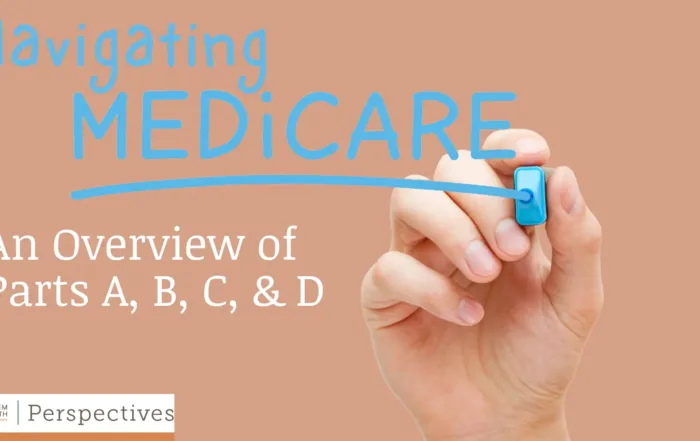
Medicare is a critical component of healthcare planning for retirement, yet its many parts can feel complex. Whether you’re nearing age 65 or planning ahead, understanding the basics of Medicare’s components—Parts A, B, C, and D—can help you prepare for important healthcare decisions.
Initial Enrollment Period
Generally, you can first sign up for Part A and/or Part B during the 7-month period that begins 3 months before the month you turn 65 and ends 3 months after the month you turn 65. If your birthday is on the first of the month, your 7-month period starts 4 months before the month you turn 65 and ends 2 months after the month you turn 65.
Example: If you turn 65 on June 2, your 7-month period would begin in March and end in September. If you turn 65 on June 1, your 7-month period would begin in February and end in August.
If you sign up for Part A and/or Part B during the first 3 months of your Initial Enrollment Period, in most cases, your coverage begins the first day of your birthday month. However, if your birthday is on the first day of the month, your coverage starts the first day of the prior month.
If you sign up the month you turn 65 or during the last 3 months of your Initial Enrollment Period, your coverage starts the first day of the month after you sign up.
Part A: Hospital Insurance
Medicare Part A focuses on hospital stays, skilled nursing care, hospice services, and some home healthcare.
- Premiums & Deductibles: Most people don’t pay a monthly premium for Part A, but it does include an annual deductible.
- Skilled Nursing Facility (SNF) Costs: Medicare Part A covers full costs for the first 20 days in an SNF, with a $209.50 daily coinsurance for days 21–100 (2024 rates). After 100 days, coverage ends.
- Extended Care Considerations: Since Part A has limits on long-term care, many people explore supplemental insurance or other options for extended care planning.
Part B: Medical Insurance
Part B complements Part A by covering outpatient care, physician services, durable medical equipment, and some preventive services.
- Costs: Premiums are income-based, starting at $185 per month for 2024, with an annual deductible of $240.
- Coverage: Services include doctor visits, diagnostic tests, and outpatient procedures.
Tip: To avoid late enrollment penalties, sign up for Part B during your Initial Enrollment Period unless you have other qualifying coverage.
Part C: Medicare Advantage
Medicare Advantage (MA), also known as Part C, is an alternative to Original Medicare that combines Parts A and B, and often Part D, into one plan.
- Private Insurance Options: These plans are offered by private insurers approved by Medicare.
- Customized Coverage: Plan details vary by provider, including networks, premiums, and copays.
- Out-of-Pocket Caps: Unlike Original Medicare, MA plans include annual limits on out-of-pocket expenses.
Part D: Prescription Drug Plans
Part D provides prescription drug coverage, either as a standalone plan for Original Medicare or as part of many Medicare Advantage plans.
- Formularies: Each plan has its own list of covered medications, organized by pricing tiers.
- Plan Comparisons: Visit Medicare.gov to compare Part D plans and find coverage that meets your prescription needs.
Take the First Step Toward Medicare Confidence
Medicare is a key element of your healthcare strategy in retirement. Exploring your options early and understanding how each part works can help you prepare for future decisions. Visit Medicare.gov for official resources tailored to your situation.
If you’re feeling unsure about how Medicare fits into your broader financial plan, consider reaching out to your financial advisor for guidance. If you’re interested in more Medicare info, you can listen to The Money & Meaning Show episode with concierge broker Chase Carey on Medicare as well as access his guide to Medicare:
Click here for podcast episode
Click here for Chase’s Busy Executive’s Guide to Medicare 2024
How does your other insurance work with Medicare? What’s the Part B late enrollment penalty? What if you have a Health Savings Account? What do you pay for services Part B covers? These questions and more are covered in the handbook below:
Click here for the official Medicare & You 2025 Handbook
Source: Medicare.gov






